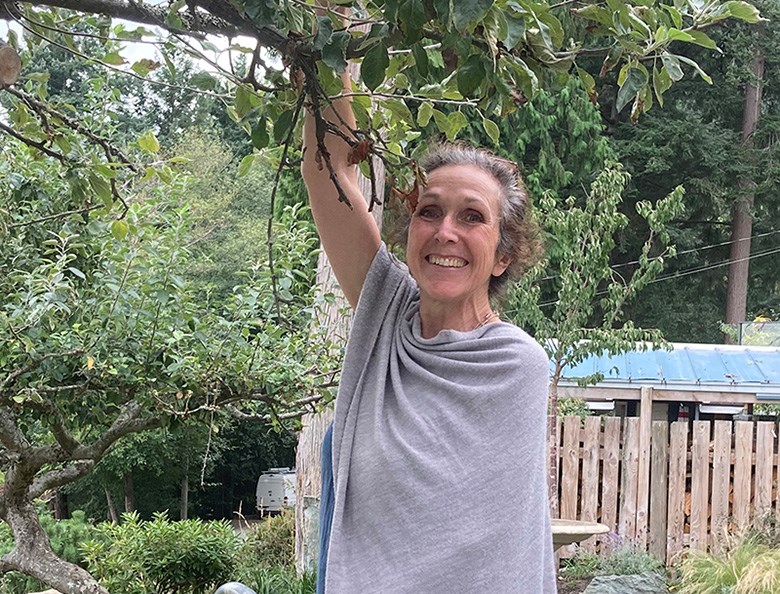All flourishing is mutual.
–Robin Wall Kimmerer
Low Hanging Fruit aims to build local food resilience here on Nex̱wlélex̱m by using volunteer energy to harvest fruit that might otherwise go to waste.
This past August, we launched LHF as a pilot project. Apples were on my mind, and apples (harvested from a generous neighbour’s tree) were the inspiration.
However, 2021 was not a good year for apples.
Cates Hill homeowner Rilee McDonald described her apple trees in September this way: “Bare - naked - empty - desolate. This is the first time in five years that we haven’t had a crop.”
Meribeth Fleetham also reported a particularly rough year for apples. She counted five on one tree which typically yields between 20 and 30. She suspected the heatwave wreaked havoc with the tree’s production. Another tree, however, had branches heavy with apples by September and the Low Hanging Fruit project helped to harvest those.
Christine Hardy of Riley’s Cidery says that, since it is only her family’s second season on the property, she doesn’t have a long history of harvests for comparison. However, this year’s yield was definitely less than last year’s, which produced a bumper crop.
“This year it was really rainy in early- to mid-May, which is when the trees get pollinated,” she said. “And then, the heatwave left a lot of apples with scorched skins. Basically, they end up with what looks like a big, brown bruise on their skins.”
This brings to light one of the unplanned side-benefits of the project: tracking the health and harvests of local fruit trees. Measuring their harvests is a good way to do it. Quantifiable data will help us understand how the trees react to changing climatic conditions. Are droughts and heatwaves affecting the trees? Can we track their natural rhythms and cycles?
It’s hoped that next year Low Hanging Fruit will start earlier in the season and will include plums — and maybe even blackberries. We’d like to see the amount of fruit harvested grow year after year, as new people come forward to share their trees.
Even the idea of a highly localized food system, when mentioned, tends to be dismissed by many as “impossible” but, really, we have no idea. How many apples were grown in Davies Orchard at the height of its production? I haven’t been able to find that information but the Howe Sound Oceanwise Report from 2020 does offer a glimpse into the abundance formerly available in the ocean ecosystem that surrounds us: in the 1930s, commercial fishers in the Georgia Straight could harvest 2,500lbs of sole in a single day.
Neither the bare apple trees many saw this summer nor the recent re-opening of sportfishing in Howe Sound reflects the potential for abundance that exists where we live.
By trying to support people who have fruit-bearing trees on their properties, and by sharing what is produced, Low Hanging Fruit aims to nurture and build abundance. It’s not a magic bullet, just a simple project, leveraging what already exists and building upon it. Success will be determined by participation. The more volunteers, donors, organizers, and fruit recipients we have, the more successful this project will be. So please check out the new Low Hanging Food webpage (www.bowenfoodresilience.ca/lowhangingfruit) and connect with BIFS to get involved.
If you have fruit trees on your property, you can also help us by filling out the following survey: https://www.surveymonkey.com/r/LowHangingFruit
Let’s work together to build an abundant, inclusive and generous community.
Many thanks to the Bowen Island Community Foundation and Bowen Island Municipality for their support in this first pilot season. Many thanks also to our volunteers, donors and the many other people who offered ideas and support. Many thanks to the dedicated team at Bowen Island Food Resilience Society for their tireless efforts.



